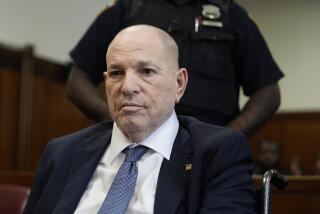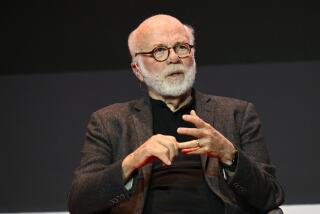Dick Cheney adjusting well to new heart
- Share via
Dick Cheney has been adjusting well to his new heart, talking and standing less than two days after receiving it Saturday. The former vice president “is doing very well” and his doctors are “very pleased” with his recovery from the transplant surgery, according to his aide, Kara Ahern.
The 71-year-old Cheney received his new heart at Inova Fairfax Hospital in Falls Church, Va., after a lifetime of heart disease, including five heart attacks. He joined the waiting list for a transplant in 2010.
Here are answers to some questions about the operation and Cheney’s health.
Is it unusual for older patients to get heart transplants?
Not as much as it used to be. Records kept by the United Network for Organ Sharing, which manages the national transplant system for the federal government, show that the proportion of donor hearts going to senior citizens has been steadily rising for more than 20 years.
Of the 2,322 hearts transplanted nationwide in 2011, 332 — or 14.3% — went to patients age 65 and older. In 1990, that rate was 3.4% — just 72 out of 2,107 hearts. Patients age 50 to 64 have long been most likely to receive heart transplants; last year, they accounted for 44% of surgeries, according to UNOS.
But isn’t 71 pushing it?
At Inova Fairfax Hospital, two of the 19 heart transplants performed there last year went to patients who were 65 or older.
Dr. Michael Acker, chief of cardiovascular surgery at the University of Pennsylvania in Philadelphia, said most medical centers — including his — did not perform heart transplants on patients of Cheney’s age. “Over 70 is rare,” he said, “but it’s been done.”
In general, the prognosis for a senior citizen with a new heart is good — 71% of patients age 65 and older are alive five years after their transplants and 45% are alive after 10 years, according to data from the Scientific Registry of Transplant Recipients, which tracks patients for research purposes. The five-year survival rate for patients age 50 to 64 is 76%, and the 10-year survival rate is 55%.
Did Cheney get special treatment to receive a heart at his age?
There’s no reason to think so, several experts said. In fact, Cheney’s time on the transplant waiting list was nearly double the median wait of 9.7 months among heart patients at Inova Fairfax. Nationwide, the median time spent on the waiting list is 5.3 months, according to data from the registry.
“It would be extremely difficult — and illegal — to have trumped somebody further up on the list,” said Dr. Gregory Fontana, chairman of cardiothoracic surgery at Lenox Hill Hospital in New York. “You acquire priority with time, and if he was at home and a high-priority-score sick patient in the hospital couldn’t match the heart, then he becomes increasingly eligible over time.”
Was Cheney a risky candidate?
Cheney suffered his first heart attack at 37. In 1988, he had bypass surgery, followed by two less-invasive angioplasties to widen his coronary arteries. After his fifth heart attack in 2010, Cheney had a mechanical pump surgically implanted in his chest to assist his failing heart. The left ventricular assist device, or LVAD, allowed him to go on a book tour last year to promote his memoir.
Studies show that survival rates with a heart transplant are higher than with an assist device.
How does an LVAD work?
A continuously operating pump, which can be as small as a size D battery, is implanted in the abdomen to help the heart push blood through the body. It’s connected to a controller unit and batteries, which remain outside the body.
An LVAD can dramatically improve the quality of a patient’s life, and some are satisfied enough to take themselves off the transplant list. The HeartMate II device that kept Cheney alive is approved by the Food and Drug Administration as both a permanent treatment and a “bridge” therapy to tide a patient over until a donor heart is found.
What’s it like to live with an LVAD?
“You’re basically a cyborg — you’re living with a device inside you that’s basically your ticker,” said Dr. Eric Topol, a cardiologist who serves as director of the Scripps Translational Science Institute in La Jolla. “This certainly affects one’s psychology. You can survive and thrive, but it’s not the same quality of life.”
Since Reiss Tatum got a HeartMate II in September 2010, he has carried six pounds of equipment with him at all times; he wears the control unit in a waist pack, and two batteries hang at his sides from a shoulder harness. A wire runs into his abdomen to power the pump.
“I’m connected to electricity for the rest of my life,” said the 72-year-old retired executive recruiter in Jacksonville, Fla. “I can take care of my pool, but I can’t go in it.” Before he got the device, he couldn’t walk from his front door to his mailbox without stopping several times to catch his breath.
What does Cheney have in store in terms of his recovery?
“It’s a long haul,” Topol said. “The first few days is basically like healing from an open-heart operation … so mainly he would have a lot of discomfort in his chest wall.”
That’s just the beginning, said Topol, who was consulted when Cheney suffered a heart attack soon after the 2000 presidential election. Doctors must thread a catheter through a vein in his neck to get tiny samples of heart tissue, which are studied for signs that the body is rejecting the new organ. He’ll also take potent drugs to suppress his immune system and minimize the risk of rejection. “The down side is you could get an infection or cancer, because basically the body’s whole surveillance system is markedly shut down or depressed,” Topol said.
The average hospital stay for heart transplant recipients at Inova Fairfax is 12 days, according to the transplant registry; nationwide, it’s 14 days.
Bloomberg News contributed to this report.








